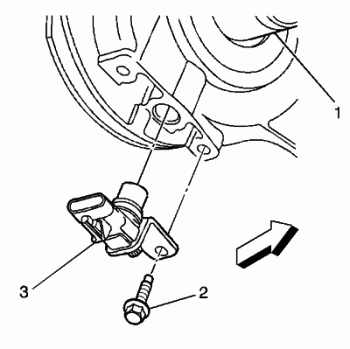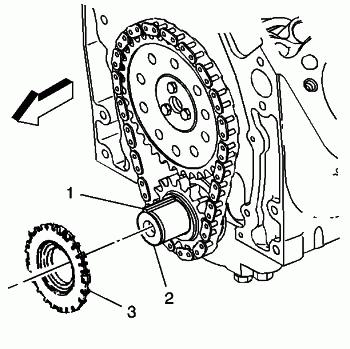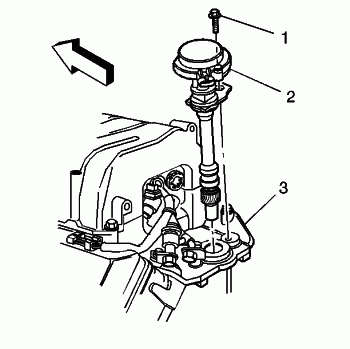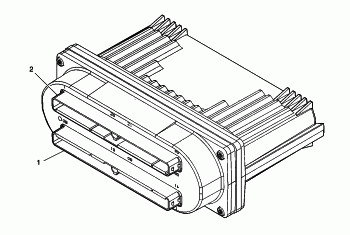At his compression level the d cup will do nothing cause the motor will never knock even with way over advanced timing. The stock pistons dont knock now with no changes being made to the heads and compression it would do nothing. Sep cost money.
As for the stock ecu it does not need the engine mgmt removed or what ever you think it would not need to be reprogrammed at all since its just not going to be feeding the injectors but it will think it is. That is fine it does not need any help if the crank sensor is working it will run the trans as normal. No mods at all. What would be gained from changing the stock ecu if its not need other than to read the sensors and support the rest of the truck equip. Along with the very restrictive plastic intake the open free flowing intakes will make more power.
But its a mute point the OP wants to run the oem stuff and thats fine just wanted to make some suggestion that may help get the truck running easily. Trans runs the speedo and the coil runs the tach thru the ecu along with the oil pressure and temp senders. so this can make the all the dash work without the engine running or the ecu thinking the engine is running but that is just one sensor. The stock ecu can be left working and in place unmolested. You only need to reprogram when swapping to another vehicle.
I dont see any issue with running the stock style pistons lots of them out there in the correct compression height. They might even be cheaper than the KB and work better. Not like the vortec is prone to knocking. They can run with the timing so far off the start kicks back when it fires off but still starts. But it does not knock. So no reason better quench would make the truck run any better. If he is running the oem ecu then the timing will be knock sensor driven and will always be in the ideal tuning range.
My escalade runs like crap with 93 octane in it. Its a lot better with 87 since thats the gas its made to work with. For this build upping compression and changing pistons style is over the top for a mild motor like the op wants.
But the Op needs help for what he wants not what pistons you have picked out for your next build. Same for the FI tech if he wants the oem stuff thats what he wants. Im not going to argue my point further with you. AA stock style rebuild is the best way to go. Im betting the engine builder has this in mind as well. Seems like the right thing for the job.
Now if the op wants some big power its out there the motor with 383 kit and flat top or d dish could produce 400 hp with a mild warm up but nothing the op wants. So oem pistons with low tension rings fit the bill.
You Escalade (if we are talking about the 99-00 Escalade with the L31) runs better on 87 octane rather than 93 because the stock PCM calibration is so freaking rich at WOT. If you get up to a slow speed and lock your trans in 2nd gear, just so that you can go to WOT for a few seconds and then let off and coast back down slower.
When I did this I noticed that if I used TPS%(throttle position sensor percentages) of roughly 85-90% that I experienced more engine power than if I matted the throttle and used 100% TPS(or 99.9999% whatever the highest TPS% is).
Whenever you use throttle % over 80%, the PCM will enter PE mode. PE mode or Power Enrichment mode, is an Open Loop fueling strategy that no longer uses the O2 sensor inputs for fueling. This is used because the narrowband O2 sensors do a crappy job of reading oxygen ratios that are NOT at stoich, or ratios away from 14.7:1 a/f on 100% gasoline. Since you need to add extra fuel when making more power other than cruising, Closed Loop(which reads the O2 sensors) is dropped and the PCM reads the PE Mode lookup tables for fueling. The table for this is labeled "POWER ENRICHMENT FUEL EQUIVALENT RATIO vs. RPM.
A stocker looks like this
rpm
0 1.150
400 1.150
800 1.150
1200 1.170
1600 1.200
2000 1.210
2400 1.220
2800 1.240
3200 1.220
3600 1.220
4000 1.210
4400 1.180
4800 1.170
5200 1.170
5600 1.225
6000 1.225
6400 1.225
The PCM takes in the rpm data as the engines rpms increase, and at every rpm break, it makes a quick calculation to determine the injector pulsewidth. It takes the Stoichmetric number, which GM uses as 14.7 and multiplies that 14.7 by the PE Mode Multiplier.
Example Lets say the engine is operating at WOT at 4800rpm, the PCM will take the 14.7 stoich number and divide it by 1.170 to find the desired A/F ratio at that particular rpm while in PE Mode.
14.7/1.170=12.5641026
So the PCM will then calculate the pulsewidth of which to fire the injectors in order to attain the resultant 12.5641026 A/F ratio at that particular data point.
The 1996-2002 Vortec L31 350s were rated at 255hp@4600rpm/330lb/ft torque@2800rpm.
So GM Engineers wanted a particular a/f ratio at peak torque and peak power in order to meet their durability and engine output goals.
Lets do peak torque which is 2800rpm.
So from the PE Mode tables:
2800rpm=1.240 for the multiplier
Resultant PE Mode fuel ratio= Stoich divided by PE Mode multiplier
14.7/1.240=11.8548387 So in PE Mode the PCM will look to calculate the injector pulsewidth in order to deliver the commanded 11.8548387:1 A/F ratio at peak torque of 2800rpm in PE Mode.
Now lets do peak power of the L31 Vortec 350 which is supposedly 4600rpm according to GM.
4600rpm=(since 4600 isn't isted, I will split the difference between 4400 and 4800rpm) therefore 1.175
14.7/1.175 = 12.5106383
So at 4600rpm the PCM will calculate the injector pulsewidth in order to deliver the proper amount of fuel to supply the commanded 12.5106383:1 A/F ratio when the PCM is in PE Mode.
As you can tell, a change in fuel, such as E10 which is 90% gasoline and 10% Ethanol changes things a bit. The Stoich ratio for E10 is roughly 14.2:1.
So if I use my Tunercats OBD2 software, I would change the Fuel Stoich parameter from 14.7:1 for gas, to 14.2 for E10 Gasohol.
So at peak power for E10 fuel the calcs would look like this
14.2/1.175 = 12.0851064
So to provide the same A/F ratio that GM wants for a Vortec 350 at peak power, while using E10 Gasohol, the PCM needs to find the proper pulsewidths to supply the engine with 12.0851064 parts of air, for every part of E10.
So basically, GM installed a calibration that will provide the advertised power/torque and do it over and over. Its not the ideal fueling for maximum ragged edge of performance. I noticed that as I started leaning out that PE Mode Fueling Multiplier, that I started getting more power the more that I opened the throttle. I now got more power at 100% TPS than I did at 85% throttle.
GM has too be careful esp. on its truck calibrations, it has to assume the worst, people running 85 octane fuel, low on coolant, towing a double car trailer, with a load of cement in the box, climbing a mountain pass at wide open throttle. As such, you will even find differences in the calibrations of a 1/2 ton Vortec 350 truck and a 2500HD/3500 truck that have the 4 bolt mains. These HD trucks are more apt to be overloaded and held at WOT for extended amounts of time. That's why they get the extra 4 bolt main caps in main bearing positions 2,3 and 4, while the lower duty under 8600GVRW 3/4 ton and 1/2 ton trucks get the 2 bolt main caps on main bearing positions 1,2,3,4 and 5.
Another PCM trick that has been around since the 4 speed overdrive transmission went electronic, which happens to be 1993 in the fullsize GM trucks, is torque management. Torque management or TM, is the pulling of timing advance just before the transmission upshifts to the next higher gear. TM actually intervences more in the 1993-1998 4l60E equipped GMT-400 style trucks than it does in the 1999-2007 GMT-800 style trucks. Why is this? Simple, its because the Vortec 350 makes more torque off idle and at low rpm than the newer GEN 3 SBC's do. There are tables in the 1993-1995 TBI and 1996-1998 blackbox for the trucks and the 1996-2000 blackbox PCM for the vans and HD trucks and the 1999 carryover Classic trucks, and into 2000 for the last year build special Tahoes that got the L31 350. These tables dictate just how much torque is lost for each degree of timing advance that is pulled out of the normal timing advance map. If you accelerate from a dead stop in a 1996+ GMT400 style truck and use a very low throttle input, you can actually feel the torque drop off just as the trans shifts. The feeling is even more pronounced on the L30 305 trucks, and the most pronounced on the 200hp L35 V6 trucks. This done to help the band survive as it energizes and grabs the drum from a standstill. TM actually helps the barely nominal 4l60e to get through the 60,000mile(100,000km) warranty periods.
here is a stock Vortec 350 L31 TM table from a 1997 Tahoe. It is labeled "Torque Management Spark Retard Limit vs RPM" The left column is RPM, the right column is the amount of degrees of spark that will be removed during upshifts. As you can see, there is no spark that is removed above 4000rpm.
0 -15.00
400 -15.00
800 -15.00
1200 -15.00
1600 -14.00
2000 -13.00
2400 -12.00
2800 -10.00
3200 -8.00
3600 -6.00
4000 -3.00
4400 0.00
4800 0.00
5200 0.00
5800 0.00
There are other TM tables, as well as Abuse Mode tables. Abuse Mode intervenes when you try to engage Reverse or Drive while at the same time having the throttle open. Without abuse mode, you can hold the engine rpm at 4000rpm, then shift from park to drive, and the trans will immediately engage 1st gear, possibly damaging the trans or driveline. We call this a "neutral drop".
With Abuse Mode active, like in the GMT-400 trucks with the Vortec engines(1996+) If you hold engine rpm at 4000rpm, then shift from park/Neutral into a gear, Abuse Mode is engaged and the PCM will first cut fuel by ceasing to pulse the injectors, this causes the engine rpm to fall to a predetermined rpm(predetermined by whatever the calibrator enters into the Abuse Mode Fuel Resume rpm vs. Mode(gear)) which is 1000rpm in a 2wd truck, then once the engine rpms have fallen to a safe rpm, the fueling is again commanded and the injectors begin fueling again until the rpm rises until the rpm which is entered into the Abuse Mode Fuel Cutoff RPM table(which is 1600rpm in a 2wd truck). While the PCM is in Abuse Mode the rpm will float between the 1000rpm refuel and 1600rpm defuel rpms until the PCM detects that the transmission has safely shifted into either Drive or Reverse. Then the PCM returns rpm control to your right foot.
There are different fuel and defuel rpms depending if you are driving a 2wd truck/SUV or have a 4wd vehicle, and if you have a 4wd vehicle, the fuel/defuel points are different if you are trying to shift into gear while in 2wd/4wd-Hi or 4wd-Lo.
Fuel cutoff 2wds is 1600rpm, for 4wds in 4wdHIGH is 1600rpm, and for 4wds in 4wdLOW the cutoff is 1200rpm.
Fuel Resume for 2wds is 1000rpm, for 4wds in 4HIGH is 1000rpm and for 4wds in 4LOW is 800rpm.
Again, all of these PCM tables are designmed to help the drivetrain survive passed its warranty period. And as GM has leared over the years. Owner/drivers use/abuse is moreso taken out of the equation for warranty work. Before these "nanny" functions were installed, GM would have to warranty parts that were broken from maneuvers that were "abuse" but couldn't be proven to abusive thus GM was on the hook to pay for broken driveline parts. Think of "Torque Management", "Abuse Mode", and even simple things like "rev limiters" are methods that GM has employed to lessen warranty work that they must pay for. Rev limiters first came on the scene in the full sized trucks for Model Year1993, the same year that the 4l60e took over for the 4L60/700R4 transmission. 1992 and older, GM full sized truck owners could literally hold the throttle wide open til the engine fragged, then dishonestly make a warranty claim stating that "I was hauling a bit of firewood in the box of my truck when all of a sudden the engine started making noises". or something to that effect.
The Blackbox PCMs have their rev limiters set to defuel at 5600rpm and then refuel when the revs drop down to 5400rpm. The engine will then cycle back and forth between 5600rpm and 5400rpm until you lift you foot off the accelerator. The rev limiters in these trucks really help the secondary truck buyer and even the guy in the wrecking yard that wants to buy a used working Vortec 350. If the original OEM calibration file has always been installed in the PCM, you can rest assured that the engine has never seen rpm over 5600rpm.
If the L31 Vortec 350, or any of the other 1996+ Vortec L29/L21 454 BBC, L30 305, L35 4.3 V6 engine has used a Blackbox PCM for 100% of its operation it's not possible for it to have seen rpm over 6000rpm even if its been flashed with its rev limiter either, eliminated 100% or raised to 6500 or 7000rpm. Even though many PCM tuning products allow you to set the rev limiter to whatever rpm you wish, once you test it in the vehicle, the engine will rev to about 6000rpm begin to break up. There is something in the Blackbox's hardware which only allows the engine rev to 6000rpm max, no matter what the rev limit is electronically set to within the engine calibration.
As you can see, this all happens very quickly, and this is from PCM's of the late 90's which in the case of the Blackbox Vortec PCM's only have 257 kilobyte calibration files. the 1997-2003 dual 80 pin PCMs have 512 kb files, then the 2003+ vehicles went to a full megabyte and up and up they went.
The calculations that occur during WOT fueling of a 2016 ZO6 Corvette with the 650hp/650lb/ft Supercharged and intercooled, Direct Injected 6.2 liter engine with Active Fuel Management that constantly phase the camshafts advance and operate in 4 cylinder mode or 8 cylinder mode, while at the same time managing boost, timing in order to not spin the tires as you are commanding 100% TPS with your right foot, but the PCM knows that if it does this it will simply blows the tires off, and if it cold outside the engine will be making a certain percentage of increased power, while the co efficient of traction has been enhanced by the burnout that you just performed so that needs to be calculated as you sidestep the clutch. Ya no SIR, I'm not going to run through that little calculation lol. These days simply making the power isn't the issue, there's way too much of it, the trick is actually making the car accelerate as quickly as possible with the available traction, so that the guy that just dropped $120,000 on his brand new 2017 ZR1 Corvette doesn't put his car into the rhubarb during his 1st 1-2 powershift.
peace
hog












